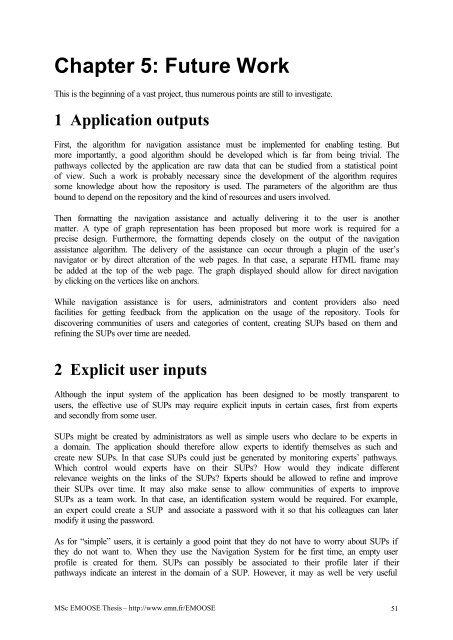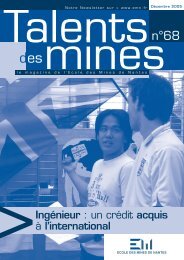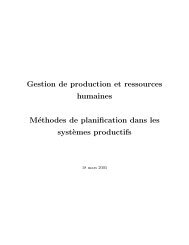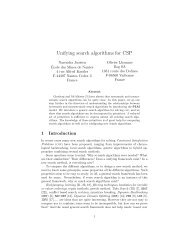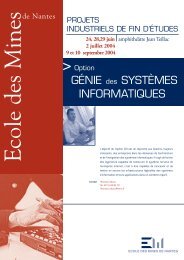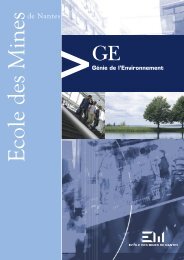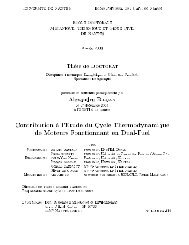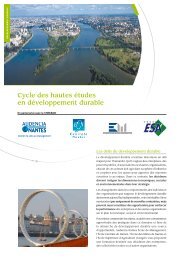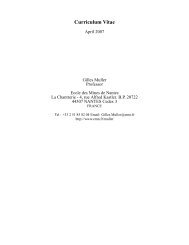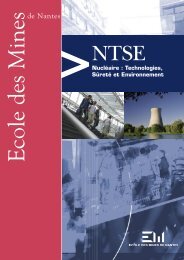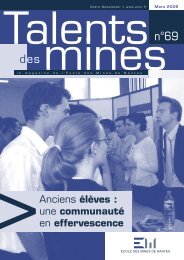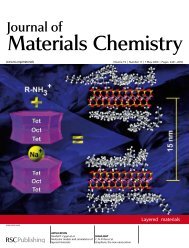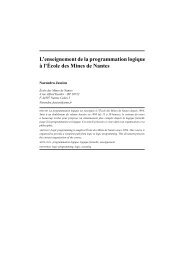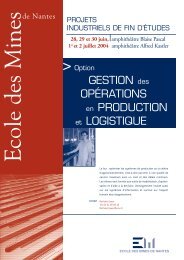pdf - 395 K - Ecole des mines de Nantes
pdf - 395 K - Ecole des mines de Nantes
pdf - 395 K - Ecole des mines de Nantes
Create successful ePaper yourself
Turn your PDF publications into a flip-book with our unique Google optimized e-Paper software.
Chapter 5: Future WorkThis is the beginning of a vast project, thus numerous points are still to investigate.1 Application outputsFirst, the algorithm for navigation assistance must be implemented for enabling testing. Butmore importantly, a good algorithm should be <strong>de</strong>veloped which is far from being trivial. Thepathways collected by the application are raw data that can be studied from a statistical pointof view. Such a work is probably necessary since the <strong>de</strong>velopment of the algorithm requiressome knowledge about how the repository is used. The parameters of the algorithm are thusbound to <strong>de</strong>pend on the repository and the kind of resources and users involved.Then formatting the navigation assistance and actually <strong>de</strong>livering it to the user is anothermatter. A type of graph representation has been proposed but more work is required for aprecise <strong><strong>de</strong>s</strong>ign. Furthermore, the formatting <strong>de</strong>pends closely on the output of the navigationassistance algorithm. The <strong>de</strong>livery of the assistance can occur through a plugin of the user’snavigator or by direct alteration of the web pages. In that case, a separate HTML frame maybe ad<strong>de</strong>d at the top of the web page. The graph displayed should allow for direct navigationby clicking on the vertices like on anchors.While navigation assistance is for users, administrators and content provi<strong>de</strong>rs also needfacilities for getting feedback from the application on the usage of the repository. Tools fordiscovering communities of users and categories of content, creating SUPs based on them andrefining the SUPs over time are nee<strong>de</strong>d.2 Explicit user inputsAlthough the input system of the application has been <strong><strong>de</strong>s</strong>igned to be mostly transparent tousers, the effective use of SUPs may require explicit inputs in certain cases, first from expertsand secondly from some user.SUPs might be created by administrators as well as simple users who <strong>de</strong>clare to be experts ina domain. The application should therefore allow experts to i<strong>de</strong>ntify themselves as such andcreate new SUPs. In that case SUPs could just be generated by monitoring experts’ pathways.Which control would experts have on their SUPs? How would they indicate differentrelevance weights on the links of the SUPs? Experts should be allowed to refine and improvetheir SUPs over time. It may also make sense to allow communities of experts to improveSUPs as a team work. In that case, an i<strong>de</strong>ntification system would be required. For example,an expert could create a SUP and associate a password with it so that his colleagues can latermodify it using the password.As for “simple” users, it is certainly a good point that they do not have to worry about SUPs ifthey do not want to. When they use the Navigation System for the first time, an empty userprofile is created for them. SUPs can possibly be associated to their profile later if theirpathways indicate an interest in the domain of a SUP. However, it may as well be very usefulMSc EMOOSE Thesis – http://www.emn.fr/EMOOSE 51


